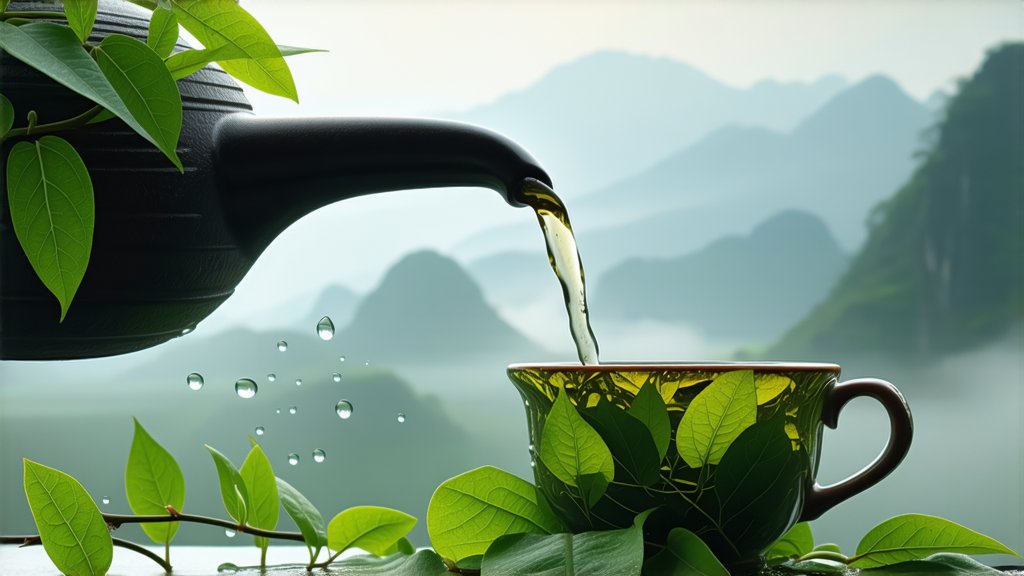
China's rich tea heritage boasts an array of exquisite green teas, each with its unique charm and history. Among them, Longjing tea, also known as Dragon Well tea, stands out as a quintessential representation of Chinese tea artistry. Originating from the picturesque village of Longjing in Hangzhou, Zhejiang Province, this tea has captivated tea enthusiasts worldwide for centuries. In this article, we delve into the historical roots, varieties, meticulous production process, and art of appreciating Longjing tea.
Historical Background
The story of Longjing tea dates back to the Tang Dynasty (618-907 AD), but it gained prominence during the Qing Dynasty (1644-1912) when Emperor Kangxi was presented with the tea and declared it the "Best Quality Tea." Since then, Longjing has been synonymous with excellence in Chinese green teas. Its name, meaning "Dragon Well," is derived from a well located near the West Lake, which, according to legend, was once visited by a dragon. This mystical connection adds to the allure of Longjing tea.
Varieties of Longjing Tea
Longjing tea comes in several grades, primarily based on the time of harvest and the part of the tea plant used. The most prized is the "Pre-Qingming" or "Mingqian" Longjing, harvested before the Qingming Festival (Tomb-Sweeping Day), usually around early April. This early spring harvest ensures the tenderest leaves and highest quality. Following this is the "Yu Qian" or "Before May" grade, picked before the end of May. These two periods yield the finest Longjing teas, known for their vibrant color, aroma, and flavor.
There are also different processing methods that lead to variations within Longjing tea. The traditional method involves hand-pan-frying the leaves over charcoal fires, giving the tea a distinct roasted aroma. Modern techniques often use electric woks or machines, which can alter the final taste profile slightly.
The Art of Making Longjing Tea
The production of Longjing tea is a labor-intensive process that requires skillful craftsmanship passed down through generations. It begins with careful handpicking of the youngest shoots and leaves, typically one bud and one or two leaves. This selective harvesting ensures only the freshest and most delicate parts of the plant are used.
After picking, the leaves undergo a series of steps to transform them into the finished product:
-
Fixation (Pan-firing): Freshly picked leaves are quickly fried in a heated iron pan to halt oxidation and preserve their green hue. This step also helps develop the characteristic chestnut aroma associated with Longjing tea.
-
Shaping: Skilled artisans use their hands to shape the tea leaves into flat, needle-like forms, resembling the shape of a dragon's well. This not only contributes to the aesthetic appeal but also affects the brewing characteristics of the tea.
-
Drying: The shaped leaves are further dried at lower temperatures to reduce moisture content without burning the delicate leaves. This step ensures the tea can be stored for longer periods without losing its quality.
-
Sorting and Packaging: Finally, the tea is sorted by size and quality, with the finest leaves separated for premium grades. It is then carefully packaged to maintain freshness until it reaches the consumer.
Appreciating Longjing Tea
To truly appreciate Longjing tea, one must engage in the traditional Chinese tea ceremony, which emphasizes mindfulness and respect for the natural beauty of the tea. Here's how to prepare and savor a cup of Longjing:
-
Warm the Tea Set: Begin by rinsing your teapot and cups with hot water to warm them up and remove any impurities.
-
Measure the Leaves: Use approximately 3 grams of Longjing tea per 150ml of water. For a more intense flavor, you can adjust the ratio slightly.
-
Boil the Water: Heat water to around 80°C (176°F). Using boiling water would scorch the delicate leaves and result in a bitter taste.
-
Steep the Tea: Place the tea leaves into the warmed teapot and pour in the hot water gently. Let it steep for about 1-2 minutes. Longjing tea unfolds gracefully, releasing its fragrance and flavors gradually.
-
Serve and Enjoy: Pour the brewed tea into cups, leaving the leaves in the pot for subsequent infusions. Observe the pale yellow-green liquor, take in the subtle chestnut aroma, and sip slowly to experience the smooth, slightly sweet yet refreshing taste with a hint of nuttiness.
In conclusion, Longjing tea is not just a beverage; it embodies centuries-old traditions, cultural significance, and a deep appreciation for nature's bounty. From its historical origins to the intricate craftsmanship involved in its production, every aspect of Longjing tea invites us to slow down, reflect, and indulge in a moment of tranquility. Whether you're a seasoned tea connoisseur or new to the world of teas, exploring Longjing is an enriching journey that connects you to China's profound tea culture.